Design
Design is the process of creating a plan or solution for the construction of an object, system, or process. It involves thinking critically and creatively to develop a blueprint or prototype that meets specific requirements and objectives.
Types of Design
- Graphic Design: Involves creating visuals and layouts for print or digital media.
- Product Design: Focuses on the creation of physical products, considering form, function, and usability.
- Industrial Design: Similar to product design but often involves mass production and manufacturing processes.
- Interior Design: Concerned with the arrangement and aesthetics of interior spaces.
- User Interface (UI) Design: Involves designing the interface of digital products to enhance user experience.
- User Experience (UX) Design: Focuses on creating meaningful and seamless experiences for users when interacting with products or systems.
Key Principles of Design
Design is guided by several fundamental principles that help ensure the effectiveness and aesthetic appeal of the final outcome. These principles include:
- Balance: The distribution of visual weight in a design to create stability and harmony.
- Contrast: The juxtaposition of different elements to make them stand out and create visual interest.
- Emphasis: Highlighting certain elements to draw attention and create focal points within the design.
- Rhythm: Creating a sense of movement and flow through patterns and repetition.
- Proportion: Ensuring that the size and scale of elements in the design are visually pleasing and harmonious.
- Unity: Achieving a cohesive and integrated design where all elements work together effectively.
The Design Process
The design process typically involves several stages, including:
- Research and Analysis: Understanding the problem or need, gathering relevant information, and analyzing constraints and opportunities.
- Ideation and Conceptualization: Generating and exploring various ideas and concepts through brainstorming and sketching.
- Prototyping and Testing: Creating a preliminary version of the design to evaluate its functionality, usability, and aesthetics.
- Refinement and Iteration: Making improvements based on feedback and testing results, leading to multiple iterations of the design.
- Finalization and Production: Completing the design and preparing it for implementation, whether it's manufacturing a product or launching a digital interface.
Study Guide
To gain a deeper understanding of design, consider the following study topics:
- Explore the history and evolution of design, including key movements and influential designers.
- Examine the role of design in various industries, such as technology, fashion, architecture, and marketing.
- Learn about design tools and software used for creating and visualizing designs, such as Adobe Creative Suite, AutoCAD, and Sketch.
- Understand the importance of user-centered design and how it impacts the creation of products and services.
- Study the ethical considerations and responsibilities of designers, including sustainability and inclusivity in design practices.
- Engage in hands-on design projects to apply theoretical knowledge and develop practical design skills.
By exploring these topics and applying critical thinking to design principles and processes, you can enhance your understanding and appreciation of the diverse and impactful world of design.
.◂Science Worksheets and Study Guides Seventh Grade. Bacteria and Viruses
Study Guide Bacteria and Viruses
Bacteria and Viruses  Activity Lesson
Activity Lesson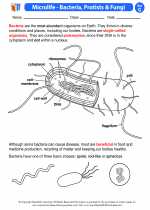 Microlife - Bacteria, Protists & Fungi
Microlife - Bacteria, Protists & Fungi  Worksheet/Answer key
Worksheet/Answer key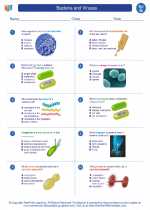 Bacteria and Viruses
Bacteria and Viruses  Worksheet/Answer key
Worksheet/Answer key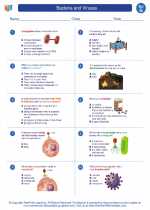 Bacteria and Viruses
Bacteria and Viruses  Worksheet/Answer key
Worksheet/Answer key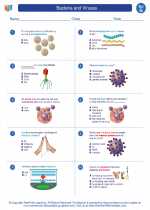 Bacteria and Viruses
Bacteria and Viruses  Worksheet/Answer key
Worksheet/Answer key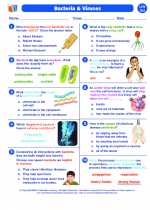 Bacteria and Viruses
Bacteria and Viruses  Vocabulary/Answer key
Vocabulary/Answer key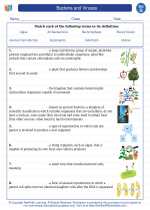 Bacteria and Viruses
Bacteria and Viruses  Vocabulary/Answer key
Vocabulary/Answer key Bacteria and Viruses
Bacteria and Viruses  Vocabulary/Answer key
Vocabulary/Answer key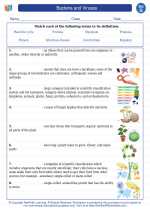 Bacteria and Viruses
Bacteria and Viruses  Vocabulary/Answer key
Vocabulary/Answer key Bacteria and Viruses
Bacteria and Viruses 

 Activity Lesson
Activity Lesson
 Worksheet/Answer key
Worksheet/Answer key
 Worksheet/Answer key
Worksheet/Answer key
 Worksheet/Answer key
Worksheet/Answer key
 Worksheet/Answer key
Worksheet/Answer key
 Vocabulary/Answer key
Vocabulary/Answer key
 Vocabulary/Answer key
Vocabulary/Answer key
 Vocabulary/Answer key
Vocabulary/Answer key
 Vocabulary/Answer key
Vocabulary/Answer key

The resources above cover the following skills:
LIFE SCIENCE
Ecosystems: Interactions, Energy, and Dynamics
Construct an explanation to predict patterns of interactions in different ecosystems in terms of the relationships between and among organisms (e.g., competition, predation, mutualism, commensalism, parasitism).